Excerpts from Jim Conrad's
Naturalist Newsletter
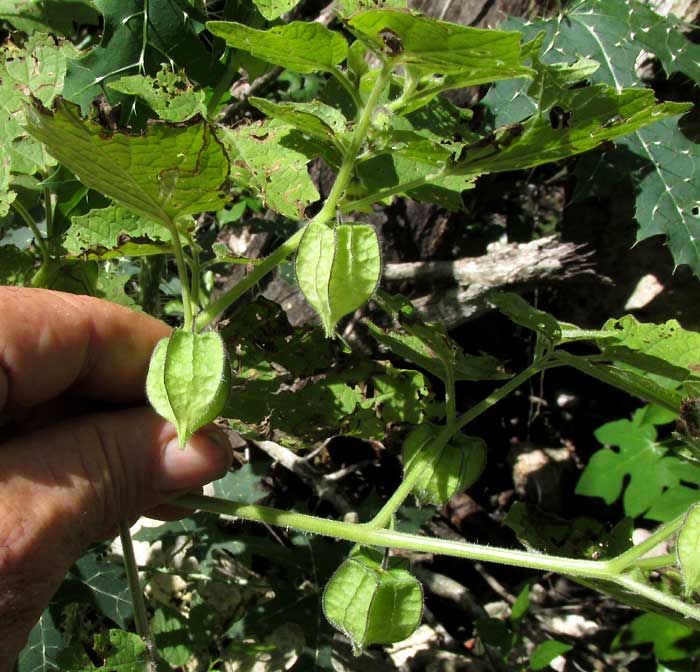
from the October 11, 2015 Newsletter issued from Hacienda Chichen Resort beside Chichén Itzá Ruins, central Yucatán, MÉXICO
HAIRY HUSK-TOMATO
On my last walk down the road between Yaxunah and Kancabzonot, a new-to-me species of husk tomato turned up sprawling among some hippopotamus-size limestone boulders dumped along the road. Husk tomatoes, sometimes called groundcherries, genus Physalis are an easy group to identify because of the Chinese-lantern-like items they produce on their branches. The "lanterns" consist of a pea- to golfball-size fruits suspended inside papery bladders such as those shown above.
An opened-up bladder showing an immature, green-tomato-like fruit can be seen below:
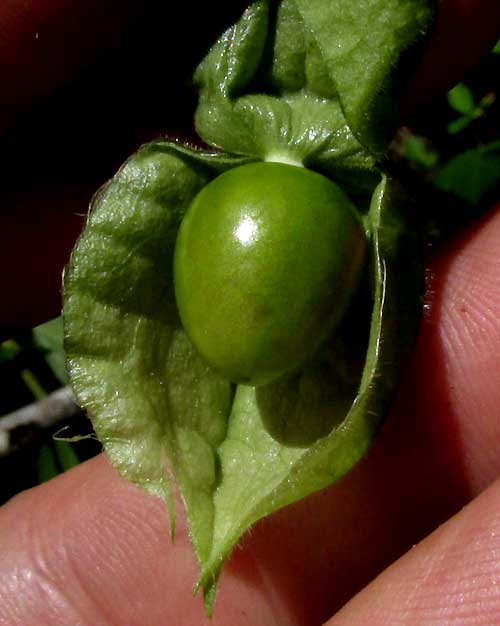
You may recognize this bladder-surrounded fruit as closely related to the Tomatillos sometimes sold in supermarkets. Tomatillos are much used in Mexican cooking, especially as the cooling-down base for green hot-sauce.
This husk-tomato species bore typical husk tomato leaves with low, widely spaced, somewhat irregular teeth, as shown below:
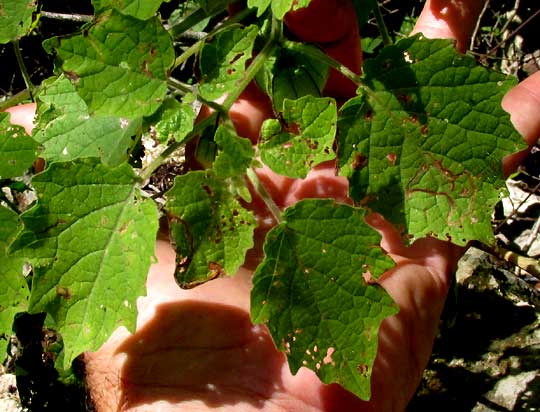
When we look at the flower, however, we start seeing something a little unusual, shown below:
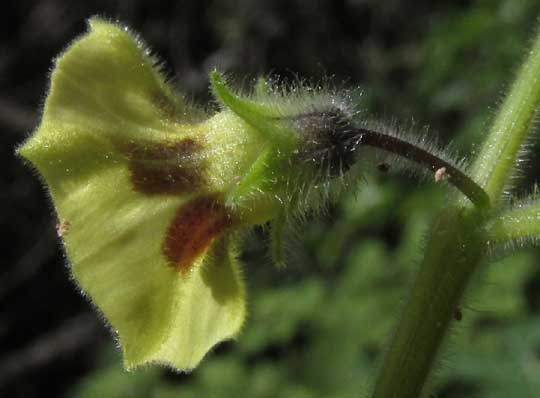
What's unusual isn't the brown spots but rather the dense covering of long, slender, straight hairs. This is a very fuzzy species. Look how the hairs cover stems lower down here:
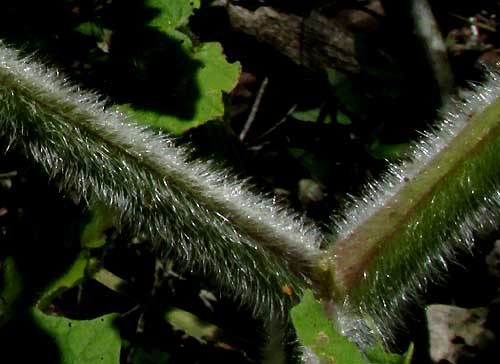
Thirteen husk-tomato species, genus Physalis, are listed for the Yucatan Peninsula, but the best I can tell none is as fuzzy as this one. That makes this PHYSALIS PUBESCENS, a widely distributed species from the US south through the Americas into South America. Over such a large area it goes by a number of common names, but maybe the most appropriate is Hairy Husk-tomato.
Husk-tomato fruits, as witnessed with Tomatillos, generally are edible, sometimes deliciously so. Garden-grown husk tomatoes can produce fruits the size of small apples, completely filling the husks. In northern supermarkets sometimes the husks are removed because northerners don't know how to deal with them. Husk tomato fruits are like green tomatoes because the two plants are closely related, both in the Nightshade or Tomato/Potato Family, the Solanaceae.